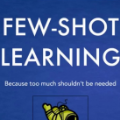Few-shot learning (learning with a few samples) is one of the most important cognitive abilities of the human brain. However, the current artificial intelligence systems meet difficulties in achieving this ability. Similar challenges also exist for biologically plausible spiking neural networks (SNNs). Datasets for traditional few-shot learning domains provide few amounts of temporal information. and the absence of neuromorphic datasets has hindered the development of few-shot learning for SNNs. Here, to the best of our knowledge, we provide the first neuromorphic dataset for few-shot learning using SNNs: N-Omniglot, based on the Dynamic Vision Sensor. It contains 1,623 categories of handwritten characters, with only 20 samples per class. N-Omniglot eliminates the need for a neuromorphic dataset for SNNs with high spareness and tremendous temporal coherence. Additionally, the dataset provides a powerful challenge and a suitable benchmark for developing SNNs algorithms in the few-shot learning domain due to the chronological information of strokes. We also provide the improved nearest neighbor, convolutional network, SiameseNet, and meta-learning algorithm in the spiking version for verification.
翻译:少见的学习(用一些样本学习)是人类大脑最重要的认知能力之一。然而,目前的人工智能系统在获得这种能力方面遇到困难。对于生物上可信的神经神经网络(SNN),也存在类似的挑战。传统的微小学习领域的数据集提供少量的时间信息。缺乏神经形态数据集阻碍了SNN的几发学习。这里,根据我们的知识,我们为利用SNNS(SNN)进行微小的学习提供了第一个神经形态数据集:N-Omniglot(以动态视觉传感器为基础)。它包含1,623类手写字符,每类只有20个样本。N-Omniglot(N-Omniglot)消除了对高度闲暇和时间高度一致的SNNNNS神经形态数据集的需要。此外,由于中风的按时间顺序信息,该数据集为在微小的学习领域开发SNNS算法提供了强大的挑战和适当的基准。我们还提供经过改进的近邻网络、同级网络、SimalialNet(Simesesenet)和Smaliking(Sypalking)版本的升级算法。




